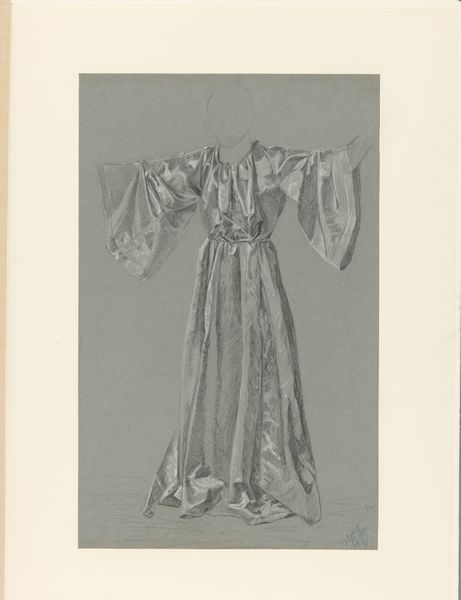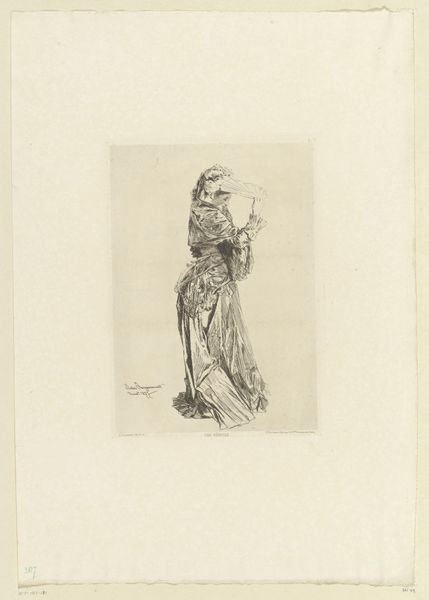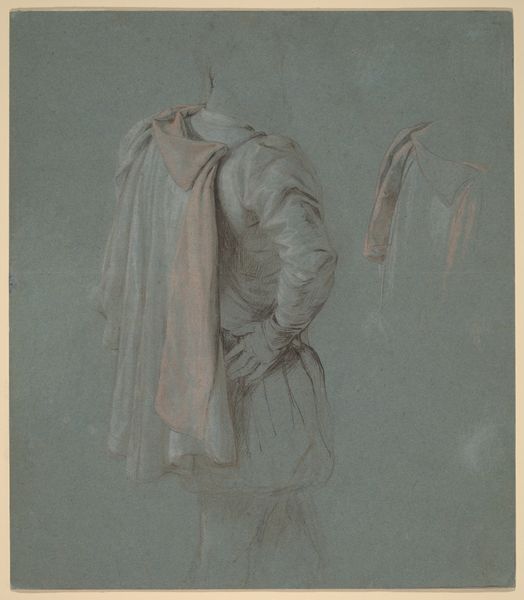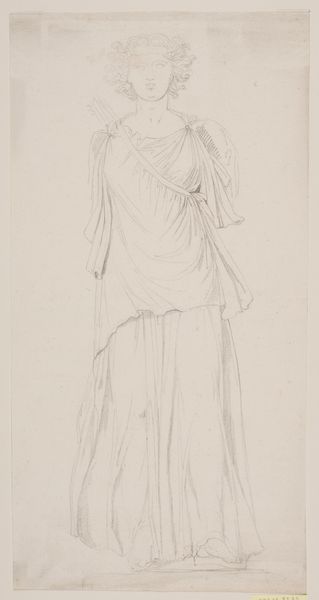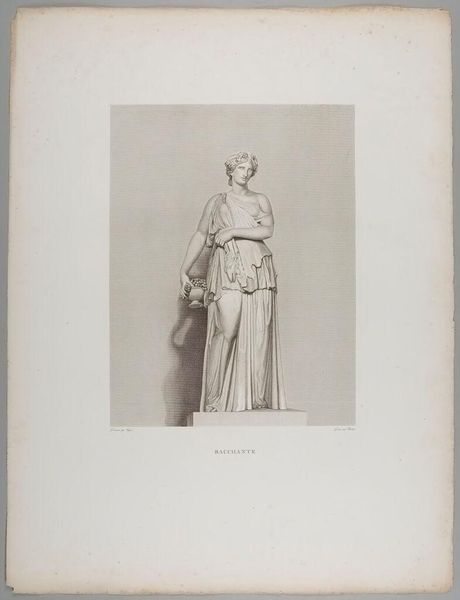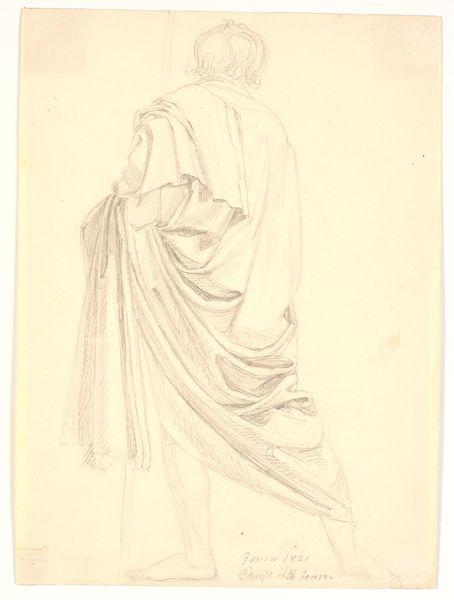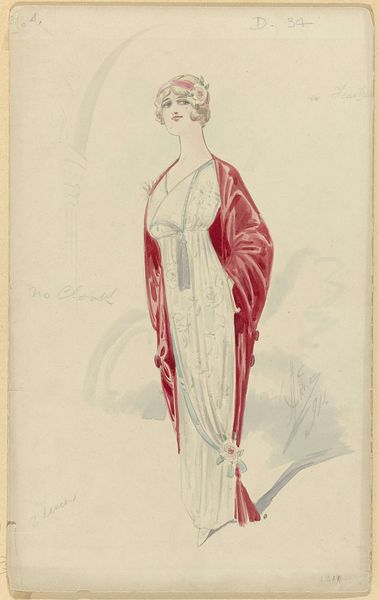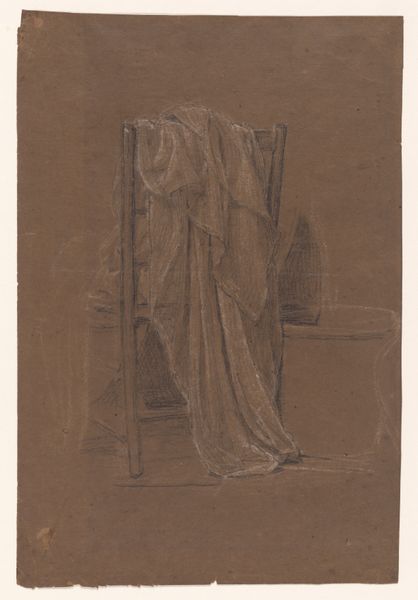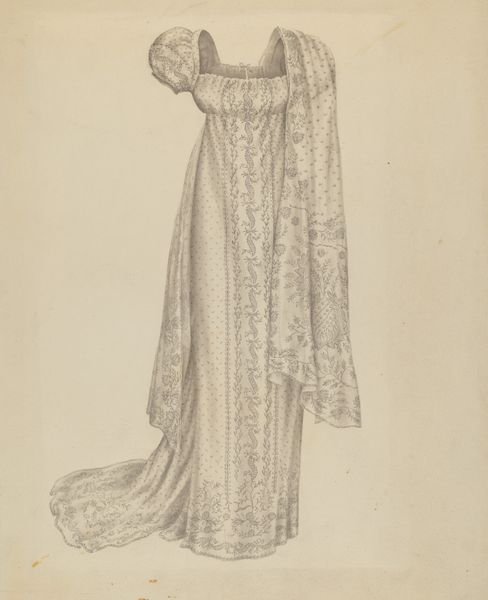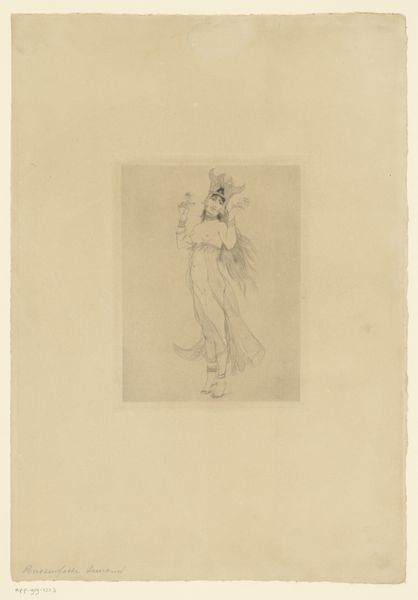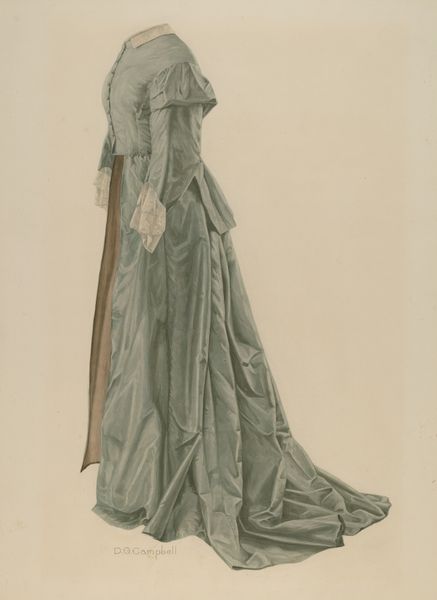
drawing, paper, pencil
#
portrait
#
pencil drawn
#
drawing
#
light pencil work
#
ink paper printed
#
pencil sketch
#
figuration
#
paper
#
pencil
#
pencil work
#
academic-art
Dimensions: height 422 mm, width 268 mm
Copyright: Rijks Museum: Open Domain
Editor: This is "Gewaadstudie," a pencil drawing on paper by Jacob Taanman, dating from 1846 to 1923 and held at the Rijksmuseum. The rendering of fabric is just so detailed, but I wonder why the figure remains so sketch-like. How would you interpret this work from a formal perspective? Curator: The strength of this drawing lies precisely in the contrast between the detailed rendering of the garment and the intentionally vague form beneath. Notice the masterful use of chiaroscuro to evoke the texture and fall of the fabric. Taanman directs our gaze to the play of light, rather than a depiction of an individual. It is the formal elements themselves that convey the subject. Editor: So, it's about the garment more than the person? Why leave the face blank? Curator: Exactly. The absence of facial features encourages us to consider the essential properties of drapery. Note the subtle variations in line weight and density that suggest volume and depth. Could the lack of distinct features emphasize a study of form? Editor: That makes a lot of sense. I was initially drawn to the technical skill, but now I see it's about prioritizing form above the subject. Thank you! Curator: The articulation of form enables us to appreciate how technical elements interact to produce particular effects, as we see exemplified in this instance. It invites a purely aesthetic viewing experience. Editor: This formal analysis has completely shifted how I perceive the piece. It’s all about the shapes! Curator: Precisely, and what is communicated is how those forms communicate with one another.
Comments
No comments
Be the first to comment and join the conversation on the ultimate creative platform.
